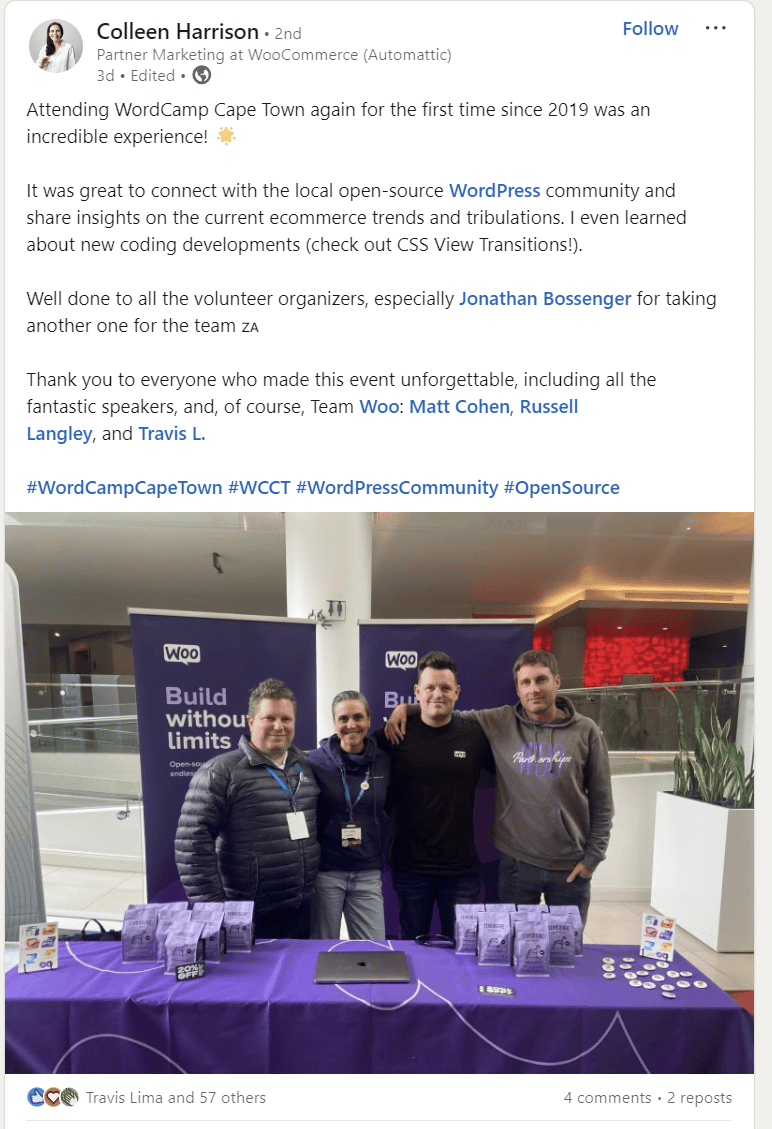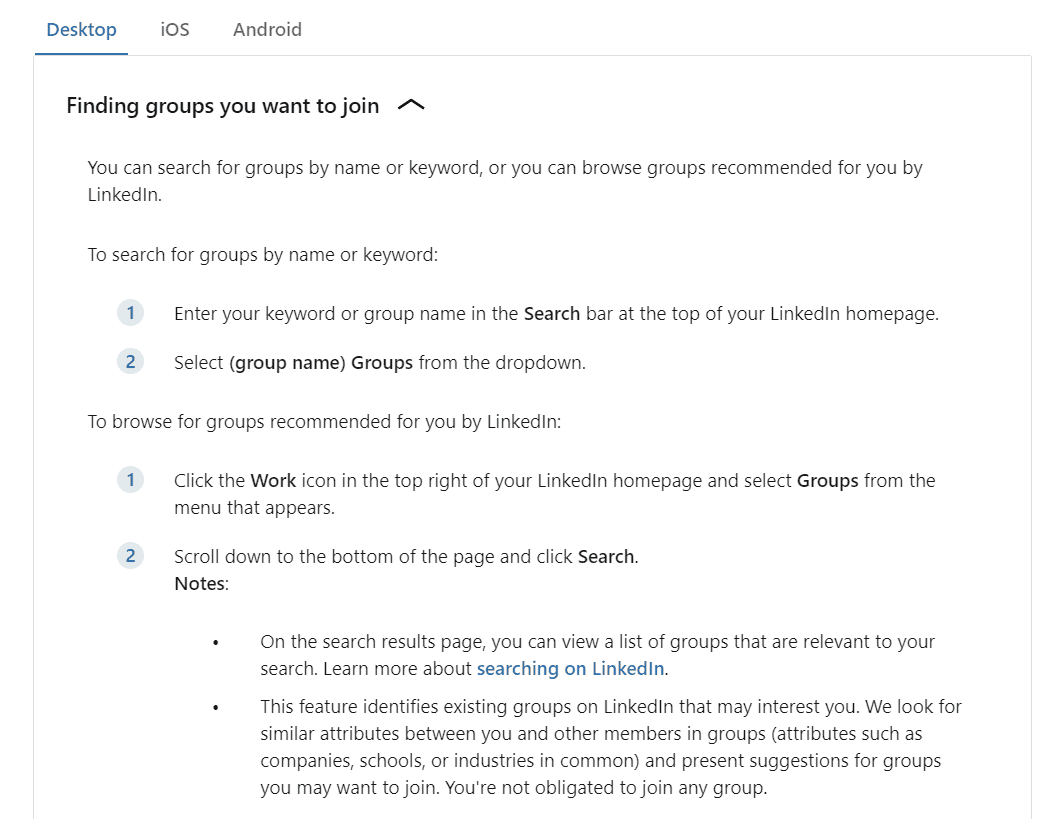Do you want to learn how to build your LinkedIn authority? If so, you’re in the right place!
Building your authority on LinkedIn can open many new doors, regardless of whether you’re looking for a new job, aiming to attract clients, or just want to establish yourself as an expert.
If you want to know just how effective this social site for professionals can be, consider this: it’s estimated that 92% of Fortune 500 companies use LinkedIn. At the same time, nearly 50% of upper-level management say they regularly use LinkedIn.
But how do you stand out among the millions of professionals on the platform? The key is you need to know how to make your profile shine while connecting with other professionals in your industry.
Today, we’ll share 7 best practices for networking and engagement that will help you build your LinkedIn authority. Follow these tips, and you’ll be well on your way to growing your reputation on one of the most-used social networking platforms in the world.
1. Optimize Your LinkedIn Profile
The first thing you should do to boost your authority on LinkedIn is make sure you have a complete, optimized profile. People are far more likely to take you seriously if your profile is well-rounded and packed with relevant information.
Think of it this way: Would you take someone’s advice if you couldn’t see their face and have no idea what experience they have with your question? The answer for most people is “probably not.”
Luckily, optimizing your LinkedIn profile is quick and easy. Let’s look at a list of things you’ll want to check off your list.
- Professional Headshot: Use a high-quality, professional photo so people can see who it is they are talking to. If needed, change the background to create a clean, distraction-free look. Sending a message with a blank headshot can almost guarantee a 0% response rate.
- Headline: Create an eye-catching headline that goes beyond your job title and highlights your unique value proposition or expertise.
- Banner Image: Choose a visually appealing banner image that reflects your personality and values.
- About Section: Write a compelling yet brief overview of your experience, skills, and accomplishments.
- Work Experience: Discuss your previous roles, highlighting what you did and how it benefited the company.
- Skills & Endorsements: Add relevant skills and request endorsements from colleagues, clients, or supervisors. This is a great way to build your credibility.
Here’s an excellent example of an optimized LinkedIn profile: 
Image source: LinkedIn
2. Create and Share High-Quality Content
Content reigns supreme on LinkedIn, just as it does everywhere else online. Consistently sharing valuable content is one of the best ways to establish your authority and get more high-quality connections.
You’ll want to come up with a rhythm for sharing content that works for you. For instance, you could choose to share your own content, whether it’s from your blog, your YouTube channel, or made specifically for LinkedIn, and share a post from well-known thought leaders in your industry.
Your goal is to publish new content consistently so people become familiar with your name and the value you bring through your content.
Don’t be afraid to share your thoughts, unique perspectives, and insights on industry trends. Sharing relevant news articles with your commentary shows you’re engaged and knowledgeable.
To make your content more engaging and shareable, mix things up with videos, infographics, and images! We’ve found that visual content tends to perform well on LinkedIn, which means it can help you build your reputation and stand out from other creators.
There’s a very good reason why 91% of successful businesses have decided to embrace video content! It’s an authentic and actionable way to build their authority on their own website, as well as on social sites like LinkedIn.
3. Engage with Your Network
While LinkedIn is great for sharing your content and achievements, there’s much more to it than that. If you look at all of the best creators on the platform, you’ll notice they are focused on building genuine relationships with other people in their industry.
Active engagement is crucial to expanding your network and establishing your presence because it shows people that you care about more than just yourself and your business.
I suggest taking the time to comment on and share posts from your connections, especially those related to your industry or interests. Thoughtful comments are great for sparking conversations and making you more visible, especially if you’re in a crowded industry.
Beyond public conversations, it’s also important to reach out to connections with personalized messages. You can congratulate them on their achievements, offer insights on shared interests, or simply start a conversation.
Here’s an amazing example of how to properly engage with your network:

Image Source: LinkedIn
4. Build and Maintain a Strong Network
Now, let’s talk about why building a strong, relevant network is crucial for building your LinkedIn authority. For one thing, when you’re connected to the right folks, you have a better chance to maximize your reach, improve visibility, and unlock new opportunities.
You’ll want to think carefully and use a strategic approach to build your network. So, instead of sending random connection requests, prioritize individuals who are in your industry and potentially align with your professional goals and interests. You can easily find your their profiles using LinkedIn contact discovery by phone number or email, making it simple to reach out and start a meaningful conversation.
I suggest connecting with other industry leaders, influencers, potential clients, peers in your field, and those with whom you share common professional interests or affiliations.
Just as important as building your network is maintaining it. Regularly review your connections, removing those who are no longer relevant or engaging with your content. A curated and active network holds far more value than a sprawling, inactive one.
Most importantly, when reaching out to potential connections, avoid generic, impersonal requests. Instead, you’ll want to craft personalized messages that demonstrate genuine interest and highlight shared interests or reasons for connecting.
After connecting, follow up with a brief, friendly message to solidify the connection and open the door for future engagement. Ultimately, building a strong LinkedIn network is about fostering mutually beneficial relationships, not simply accumulating contacts.
5. Participate in LinkedIn Groups
LinkedIn Groups are a powerful way to build your authority and meet like-minded people in your industry. These groups are hubs where professionals with shared goals and passions come together to exchange ideas, spark discussions, and build meaningful connections.
I’ve found that by joining and actively participating in relevant groups, you open doors to a wealth of opportunities to expand your network, learn about new industry trends, and establish yourself as a thought leader.
When choosing groups to join, focus on quality over quantity. Seek out groups specifically related to your industry, areas of expertise, or professional goals. Look for groups with active discussions and engaged members who are genuinely interested in sharing knowledge and building connections.
Once you’ve joined a group, don’t be afraid to jump into conversations. People just like you make these groups because they want to build a community. So don’t hesitate to share your thoughts and help people when they have questions. You can also ask questions of your own or share valuable content from your website.
To get the most out of LinkedIn groups, active participation is a must.
Below is how to quickly and easily find groups where you can build your authority. If you’re having trouble finding a group that perfectly aligns with your niche or interests, consider starting your own!

Image Source: LinkedIn Help Center
6. Leverage LinkedIn Analytics
Now that you know how to put yourself out there in the LinkedIn community, let’s talk about how and why you need analytics to refine your strategy. In order to know what’s working and what isn’t, you need insights into how people interact with your content and your profile.
LinkedIn comes with a basic set of analytics that you can monitor to do just that. These analytics offer valuable insights into your profile’s performance, audience engagement, and the overall effectiveness of your content strategy.
By tracking key metrics, you can gain a deeper understanding of what’s working well and how you can do better in the future. We’ve found that this data-driven approach helps us make informed decisions about our content strategy, networking efforts, and overall approach to building our LinkedIn authority.
Here are a few of the metrics worth tracking:
- Profile Views: This first metric tells you how many people are viewing your profile, indicating your overall visibility and reach on the platform.
- Post Impressions: Impressions represent the number of times your posts appear in users’ feeds. Tracking this metric helps you understand the potential reach of your content.
- Engagement Rates: This metric encompasses likes, comments, shares, and clicks on your posts. High engagement rates show that people are resonating with your content, which means it’s more likely to go viral.
- Follower Growth: If you track your follower count over time it’s easier to gauge how well your content is doing at turning profile visitors into connections.
By closely monitoring these metrics, you can identify patterns and trends in your audience’s behavior. If you have a LinkedIn newsletter, you’ll also be able to see the total number of subscribers and article views on this page. I suggest starting one if all of your other content marketing platforms are up-to-date and well-maintained.
For example, you might discover that video content consistently generates higher engagement rates than text-based posts or that articles focused on a particular aspect of your industry tend to attract more views. Once you’re armed with this knowledge, you can adjust your content strategy and shift your focus to formats and topics that resonate most strongly with your target audience.
It’s also worth mentioning that LinkedIn analytics provide valuable demographic information about your followers, such as their job titles, industries, and interests. You can use this knowledge to build your authority in communities that you otherwise would have missed.
7. Use LinkedIn Features to Your Advantage
LinkedIn is full of features that you can use to build rapport with your audience while creating more opportunities for connection and engagement. By stepping outside of the basic profile and post format and embracing these features, you can dramatically boost your authority and profile engagement.
One of the most powerful tools at your disposal is LinkedIn Live. Live video streaming makes it super easy to connect with your network in new and exciting ways. Real-time Q&A sessions, engaging discussions on trending topics, or even behind-the-scenes glimpses at upcoming projects are all possible with LinkedIn Live.
Live video provides an immediacy and authenticity that traditional posts often lack, which is an excellent way to build trust with your audience.
I also suggest creating a LinkedIn business page so people can learn more about your company after they check out your profile. A well-made business page will help you share company updates, highlight your products or services, attract top talent, and connect with potential clients and customers in a more targeted way.
Interactive content is another powerful way to boost engagement and foster a sense of community within your network. LinkedIn’s built-in poll feature offers a simple yet effective way to gather opinions, conduct quick polls or market research, and spark conversations around topics relevant to your industry.
And finally, don’t underestimate the power of a simple endorsement or recommendation. This gesture will go a long way toward building strong relationships and enhancing your reputation.
This generosity often leads to reciprocity, which amplifies your own profile’s visibility and credibility within your network.
Final Thoughts on LinkedIn Authority: Be Consistent and Persistent
Building your authority on LinkedIn takes time and dedication, but the rewards are well worth the effort. As you’ve seen today, there are a ton of different ways to get started. I know it’s hard, but you’ll need to be patient and persistent if you want to build genuine connections and authority in your industry.
Don’t be discouraged if you don’t see immediate results. If you work at it, you will see results. I recommend making it a habit to engage with your network, share insightful content, and participate in industry discussions. Before long, people will see that you’re authentic and have their interests in mind, and there’s a good chance they’ll connect and want to keep the conversation going.
I believe anyone reading this is capable of cultivating a thriving LinkedIn presence that reflects their expertise and helps bring them one step closer to their goals. The strategies I’ve outlined today will help you get started on your journey.

